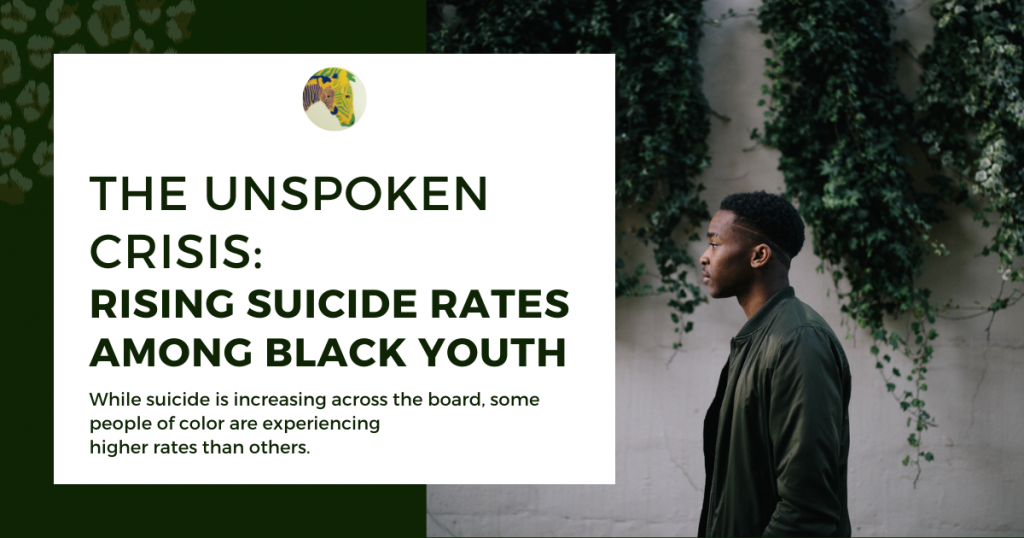Few realize that suicide is the 10th leading cause of death among Americans. From 1999 to 2018, the suicide rate has increased by 35%, according to the Centers for Disease Control and Prevention.

One trend that is particularly disturbing is climbing suicide rates among American youth: From 2007 to 2017, the rate for ages 10 to 24 increased by 56 percent and is the second leading cause of death for people aged 15 to 24. However, for Black youth, boys specifically, the story is even more alarming as their suicide rates are increasing faster than any other racial/ethnic group, according to the executive summary of a report by the Congressional Black Caucus, “Ring the Alarm: The Crisis of Black Youth Suicide in America”. From 1991 to 2017, suicide attempts by Black adolescents rose by 73%, while for young Black males, injury from suicide attempt rose by 122%.
Why?
Psychological, environmental, and social factors can cause suicidal ideation, with mental illness as a leading risk factor. In addition, poverty levels affect mental health status, disproportionately affecting Black youth: Nearly 46 percent of Black children under the age of 6 live in poverty compared to 14.5 percent of White children. Taking these factors into consideration, the reasons why begin to mount. For example, Black youth are much less likely to get treated for depression, a significant risk factor for suicide ideation. Barriers to treatment include less health insurance coverage (compared to Whites), a mistrust of the system, and stigma around receiving care.
What Can be Done?
There are multiple recommendations included in the Congressional Black Caucus report, ranging from increased research funding to the promotion of best practices to driving community awareness campaigns. Of particular interest to behavioral health stakeholders, the report suggests funding research on the following areas:
- The effectiveness of depression screenings to help identify Black youth at risk for suicide
- The practical, systemic, and cultural barriers to treatment
- Evidence-based interventions for mental health and suicide risk, especially those that are age-appropriate and culturally relevant for Black youth
- Evidence-based interventions that show the effect of placing social workers and other mental health professionals in schools
The report further states that the racial gap in mental health services must be addressed.
Historically, suicide has been viewed as a problem mostly affecting White Americans, and except for Native Alaskans and American Indians, the data bear it out. However, the perception that suicide is a problem predominantly affecting Whites must change to address what the report calls a crisis among Black youth. To that end, the report recommends establishing a community engagement and awareness campaign directed at anyone who interacts with Black youth.
As always, the team at Twins Family Foundations is here to help with any questions or concerns.
